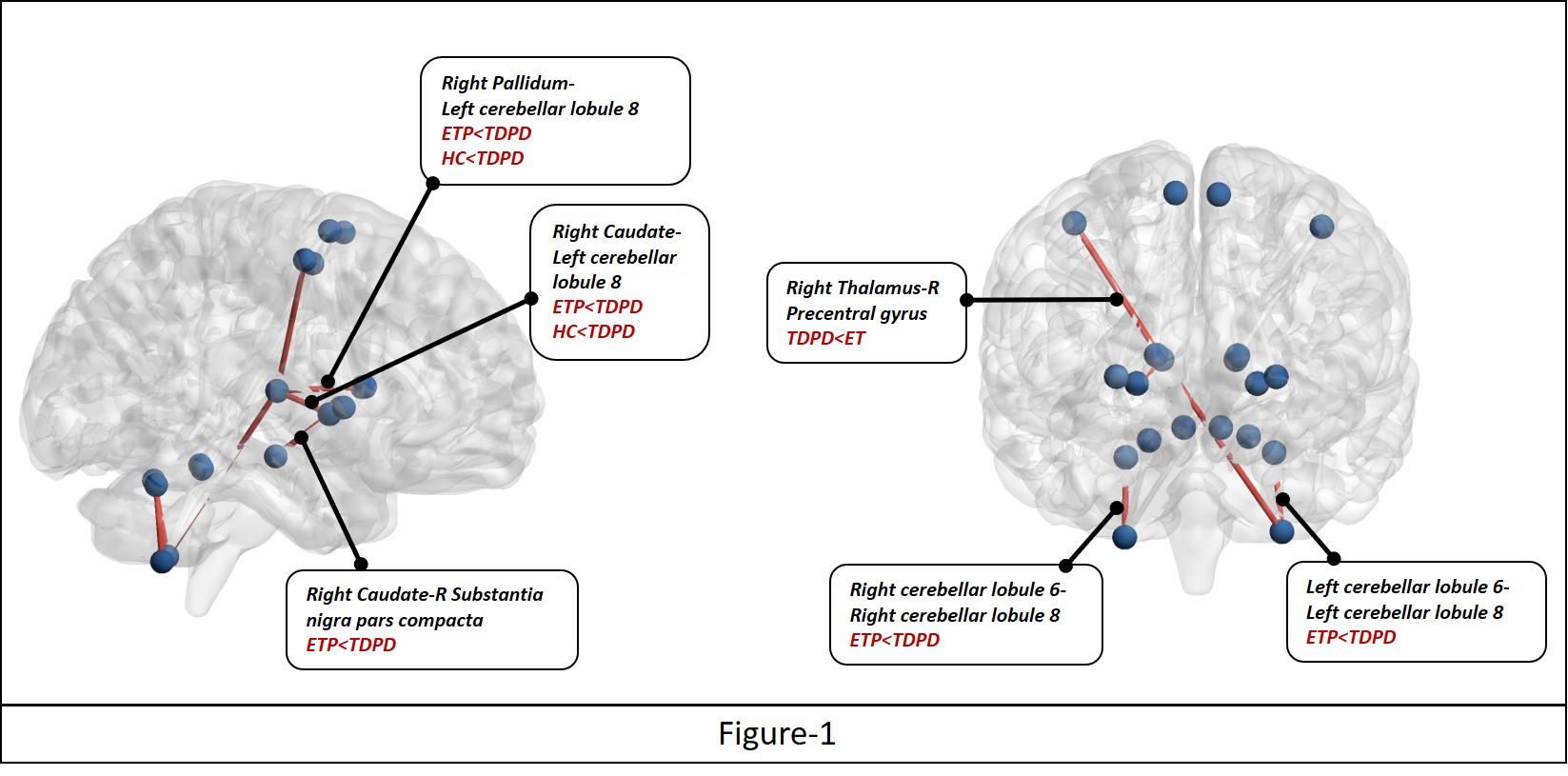Category: Tremor
Objective: To evaluate streamline density (SD) of the basal ganglia-thalamocortical (BGTC) and cerebello-thalamocortical (CTC) network in tremor dominant Parkinson’s disease (TDPD) and essential tremor plus (ETP) syndrome.
Background: The BGTC and CTC are implicated in the pathogenesis of postural and rest tremor, however, the extent of white matter (WM) abnormalities across disorders is uncertain. TDPD and ET are commonly encountered tremor dominant neurological disorders. Most studies have focused on the BGTC in TDPD and CTC in ET. However, It is necessary to evaluate alterations in both networks to gain new insights into tremorogenesis.
Method: Multi-shell diffusion-weighted images were acquired for 25 patients with TDPD, 25 with ETP and 25 healthy controls (HC). Following this, structural connectomes of the BGTC and CTC were generated by probabilistic tractography. The SD map obtained from Probtrackx was extracted for a total of 94 unique connections. Tremor severity was ascertained using the Fahn-Tolosa-Marin tremor rating scale (FTMRS) and correlations were carried out between duration of illness, and disease severity with FDR set at 0.05.
Results: There was no difference in total FTMRS score. Compared to HC and ETP, TDPD had a higher SD in tracts connecting the R-pallidum to L-cerebellar lobule 8 (C8), and between R-caudate to L-C8 (Figure-1). Compared to ETP, a lower SD in TDPD was observed between R-PCG to R-thalamus. ETP had a lower SD compared to TDPD between the R-caudate to R-SNc, R-C6 to R-C8 and L-C6 to L-C8. In TDPD, the total FTMRS directly correlated with SD of L pallidum-R C8 , L putamen-R C8. R FTMRS score inversely correlated with SD of R-SNc to R-PCG. Rest tremor score directly correlated with SD of R-pallidum to R-thalamus, and inversely with SD of L-caudate to L-PCG. Action tremor score inversely correlated with SD of R-caudate to R-pallidum. In ETP, FTMRS Part A directly correlated with SD of L-pallidum to L-SMA. Rest tremor correlated directly with SD of R-caudate to R-pallidum, and action tremor inversely correlated with SD of L-C8 to R-C8.
Conclusion: ETP shows a widespread disruption, with tracts across BGTC and CTC showing a reduction in density. In TDPD, the only reduction was observed in the pivotal common pathway of thalamus-cortex. In both disorders, the connections between the BGTC and CTC contributed to tremor severity, there was no clear distinction.
To cite this abstract in AMA style:
S. Prasad, J. Saini, R. Bharath, P. Pal. Abnormal streamline density of the tremor network in tremor dominant Parkinson’s disease and Essential tremor plus syndrome [abstract]. Mov Disord. 2022; 37 (suppl 2). https://www.mdsabstracts.org/abstract/abnormal-streamline-density-of-the-tremor-network-in-tremor-dominant-parkinsons-disease-and-essential-tremor-plus-syndrome/. Accessed October 22, 2025.« Back to 2022 International Congress
MDS Abstracts - https://www.mdsabstracts.org/abstract/abnormal-streamline-density-of-the-tremor-network-in-tremor-dominant-parkinsons-disease-and-essential-tremor-plus-syndrome/

